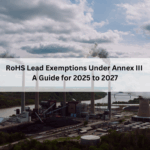The Automotive Industry Action Group has collaborated with the German Association of the Automotive Industry (VDA) in publishing the international guide on Failure Mode and Effects Analysis (FMEA). AIAG and VDA have combined together and formed their previous FMEA manuals into a single document. FMEA is the most commonly used risk analysis method in the automotive industry tool set and helps suppliers to predict and prevent failures in both the product development and part production processes.
The new FMEA manual provides consistent direction and guidance to all automotive suppliers. The major changes in new manual from previous version are explained below:
FMEA for Monitoring and System Response (FMEA-MSR)
A new method has been added called FMEA-MSR is a supplemental “FMEA for monitoring and system response”. The FMEA –MSR is intended to maintain a safe state or state of regulatory during customer operation. This will identify possible errors or failures that can occur under normal operating conditions. FMEA-MSR focus on how well monitoring systems can identify failures and how useful response systems are in maintaining a safe state and a state of regulatory compliance throughout the useful life of product.
Replacement of Risk Priority Number (RPN) with Action Priority (AP)
The Risk Priority Number (RPN) is replaced with Action Priority (AP) that comes from a series of table that define the AP based on the Severity, Occurrence and Detection ratings. The Action priority is not a risk priority but it is a priority for action (high, medium or low) to reduce the risk of failure to function as intended. While the RPN encouraged ranking potential failures from high to low, the AP table define an absolute priority for action regardless of how many other items have been identified in the FMEA study. Action Priority defines the actual need of action to reduce the risk. Action priority is system to prioritize the recommended action with AP system and decision making become simple. Action priority is divided into 3 categories.
- High Action Priority: If the action priority is high, then the cross functional team must identify the exact action to improve the prevention and detection control. So it must need an action for high action priority.
- Medium Action Priority: If the action priority is Medium, then the cross functional team should identify the required action to improve the detection and prevention control or the company should justify to customer with proper document that why this current control is adequate. The action taken for Medium AP will improve the process further.
- Low action priority: If the action priority is low, it is our company wish to take action if we found it is possible.
The most noticeable change in the AIAG & VDA FMEA is a new 7-step approach for FMEA development, which provides easy way to documenting technical risks in precise manner.
The 7-step approach includes Planning & preparation, Structure analysis, Function analysis, Failure analysis, Risk analysis, Optimization, and Result documentation.
- Step 1: Planning & Preparation:
The initial step of DFMEA/PFMEA is to identify the project and fix the boundaries and to know the scope for the identified project. The identified project to be planned as per 5T methodology and they are Intent, timing, team, task and tools. - Step 2: Structure analysis:
Structure analysis is used to identify and break down the process into sequential steps. It uses the boundaries stipulated in the definition of scope done in previous step in order to identify each stage, interface and logistical element in the process at hand. The output of structural analysis provides a tool for collaboration between customer and supplier during technical review. - Step 3: Function analysis:
There should be need of exploration of what the product should be doing in the function analysis step, as well as of what should be executed in the general process and how this functionality is facilitated. By using the step 2 each element is analyzed separately in terms of its function and corresponding requirements. - Step 4 : Failure analysis:
The concept of a failure analysis is used to understand the imperfections in the process. The analysis is made up of the mode, effect and cause of the failure. - Step 5: Risk analysis:
The severity, occurrence and detection of each failure will be evaluated in this step. An action priority level of High (H), Medium (M) and Low (L) is obtained based on evaluations. The aim of action priority level is to reducing the risk of failure to function as intended. - Step 6: Optimization:
The primary objective of the optimization is to develop actions that reduce risks and increase customer satisfaction, improving the product. The most desirable action will involve lowering the occurrence of failure causes or improving detection controls. - Step 7: Result documentation:
The each and every results to be documented in FMEA. An FMEA study is not finished until step 7 has been completed.
AIAG and VDA’s new FMEA guidelines incorporate AI and advanced technologies to enhance quality management. With ComplianceXL, your company can ensure accurate FMEA documentation and compliance with the latest standards. Stay ahead of the curve by partnering with us to save time and resources. Interested in learning more? Contact ComplianceXL today.





